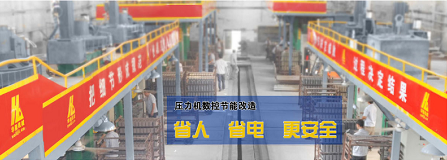Refractory industry population aging problem and its automation solution
Author: haloong Time: 2023-09-04 16:15:55
As a traditional industrial field, refractory industry is facing the increasingly serious problem of population aging. This phenomenon has had a profound impact on the development of the industry, including labor shortages, declining productivity, and slow technological upgrading. In response to this problem, automation solutions are becoming a key choice for the refractory industry. This article will explore in depth the problem of aging population in the refractory industry and the importance and application prospects of automation solutions.
First of all, understanding the background and development history of the refractory industry is crucial to understanding the causes of population aging. Refractory materials are mainly used in high-temperature industrial fields, such as steel, glass and ceramics, etc., and play an irreplaceable role in the country's economic development. However, with the development of the industry, the aging of the population is becoming increasingly serious, leading to problems such as labor shortage and slow technological upgrading.

The aging of the population has a broad impact on the refractory industry. First, labor shortage makes it difficult for enterprises to recruit and train new employees, which directly affects production efficiency and product quality. Secondly, due to the relatively low technical level of old employees, it is difficult to adapt to the needs of modern production lines, which further reduces production efficiency. In addition, the aging of the population may also lead to a decline in the innovation ability and market competitiveness of enterprises, posing a threat to the long-term development of the industry.
In response to the aging population in the refractory industry, automated solutions have become an effective response strategy. Automation technology can improve production efficiency, reduce labor costs, optimize the working environment, and provide enterprises with sustainable development power. In the refractory industry, the application of automation solutions includes automation equipment such as servo electric screw brick presses, control systems and intelligent inspection technology. The application of these technologies can help enterprises improve production efficiency and product quality, reduce the number of waste and defective products, and reduce production costs.
In order to demonstrate the application effect of automation solutions in the refractory industry, we can combine the analysis with specific cases. For example, a refractory production company introduced an automatic production line based on a servo electric spiral brick press, and realized the automatic control of the production process through automation equipment such as robots. After the transformation, the production efficiency of the enterprise has been significantly improved, and the labor cost has also been reduced. In addition, the application of automation equipment also makes the safety risks in the production process have been effectively controlled, and provides a guarantee for the sustainable development of enterprises.
By comparing traditional methods and automation solutions, we can more clearly see the advantages of automation technology in the refractory industry. Automation technology can not only improve production efficiency and product quality, but also reduce production costs and labor intensity, providing strong support for the sustainable development of enterprises.
In summary, the aging population of the refractory industry has had a profound impact on the development of the industry. In response to this problem, automation solutions are becoming a key choice for the refractory industry. Through the application of automation technology of equipment such as servo electric screw brick press, enterprises can improve production efficiency, reduce costs, optimize the working environment, and improve market competitiveness. Therefore, the refractory industry should actively promote automation upgrades to meet the challenges of an aging population and provide strong support for the long-term development of the industry.






